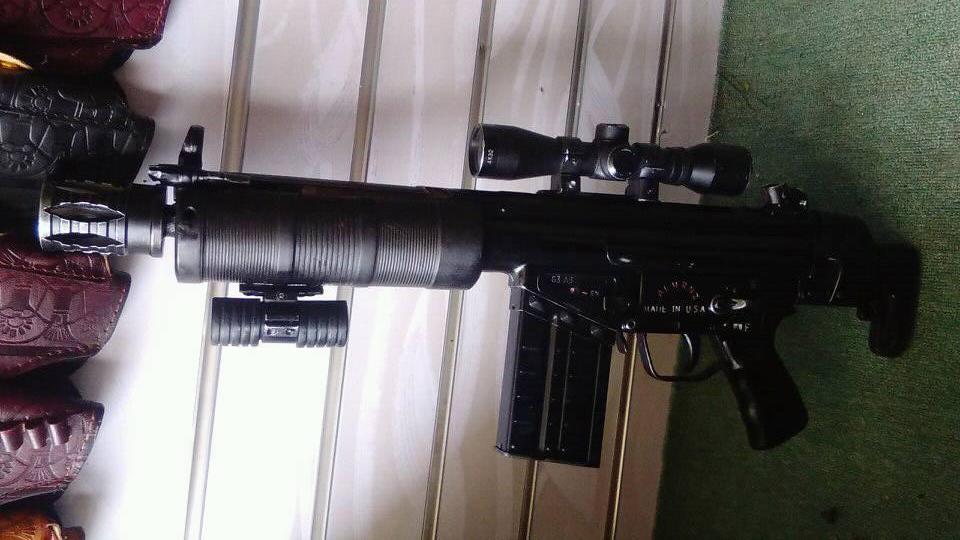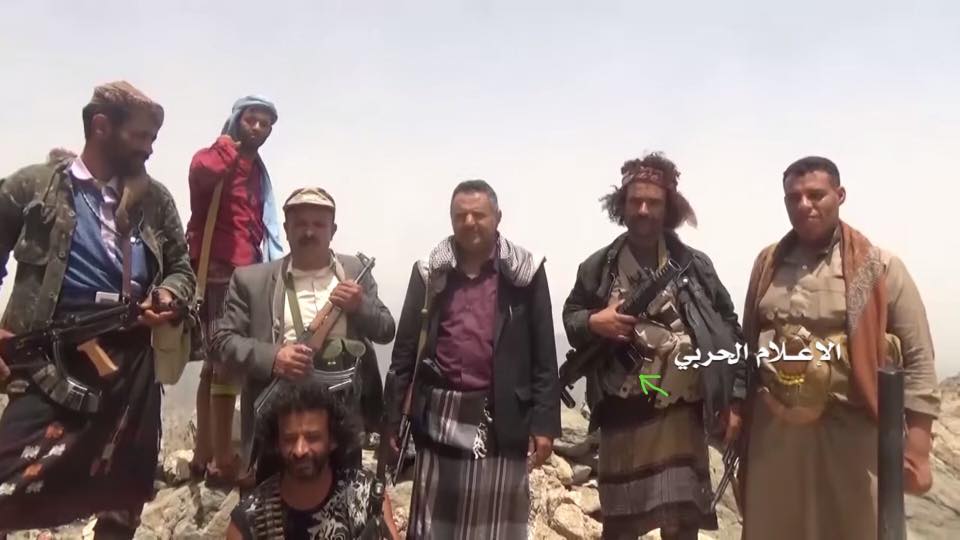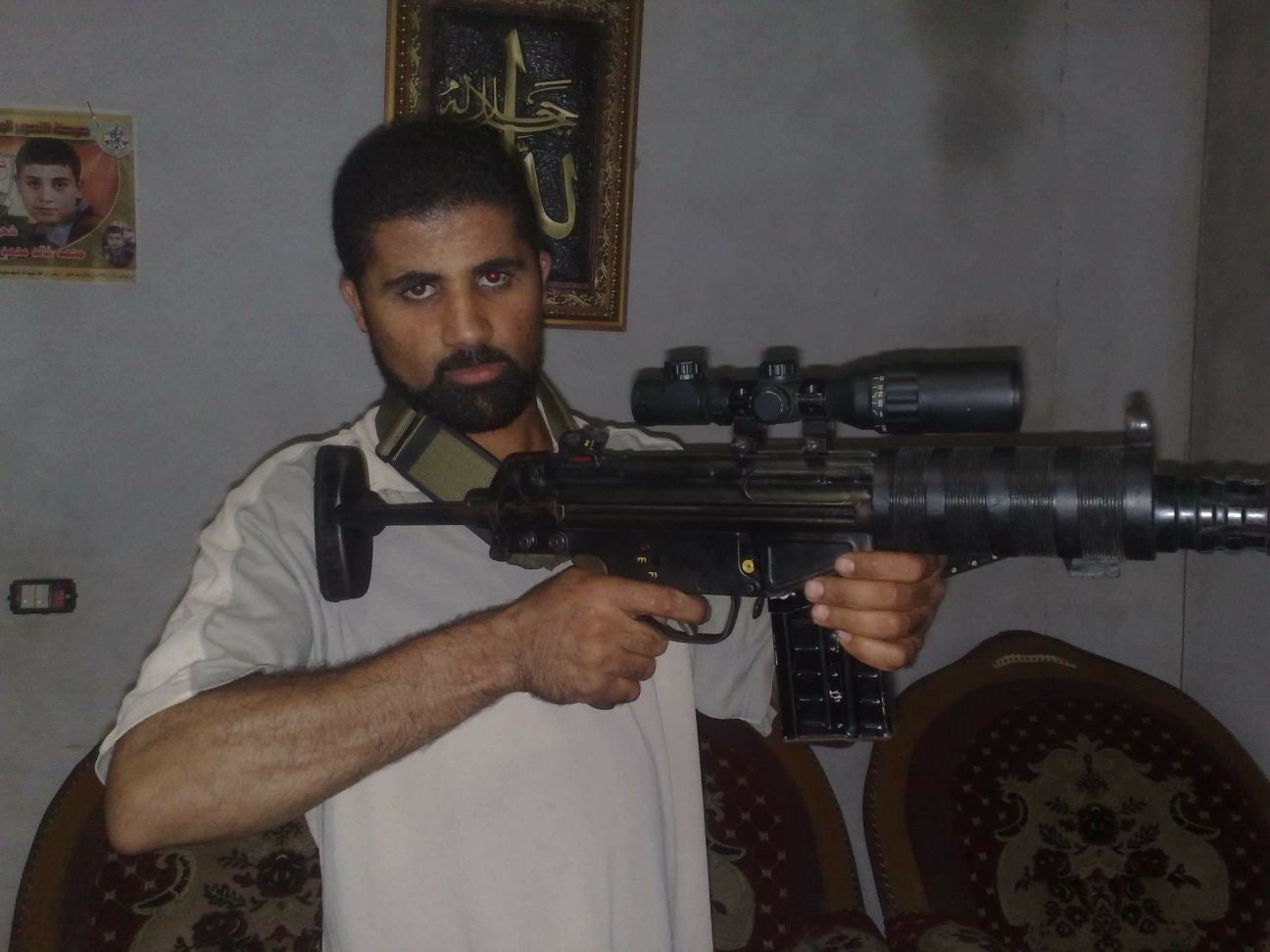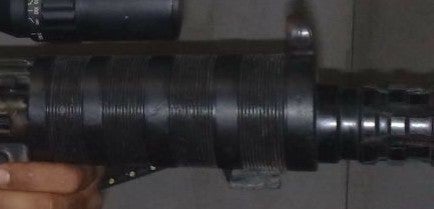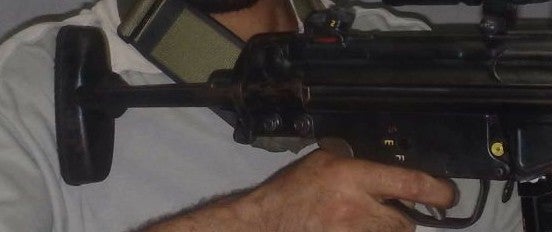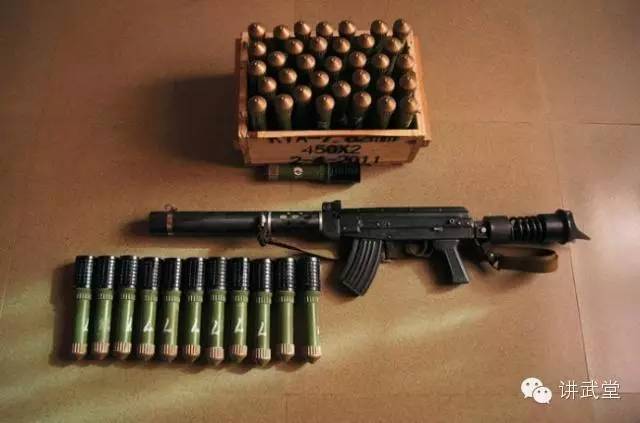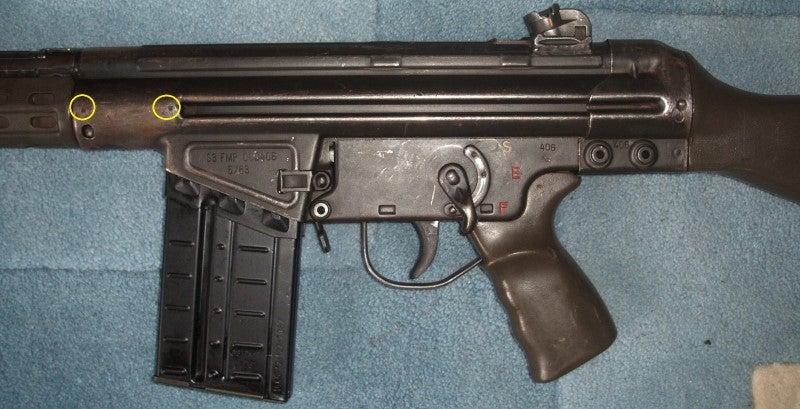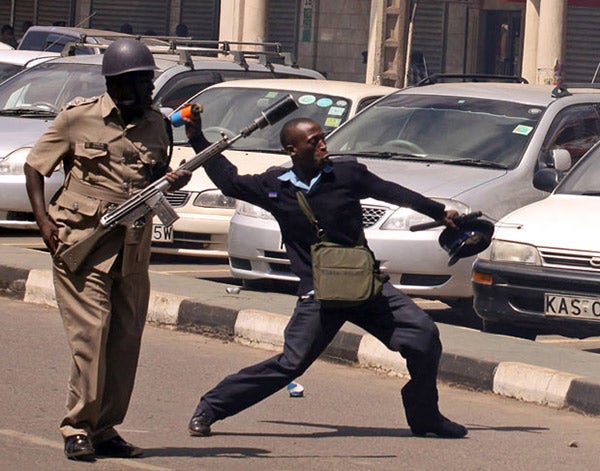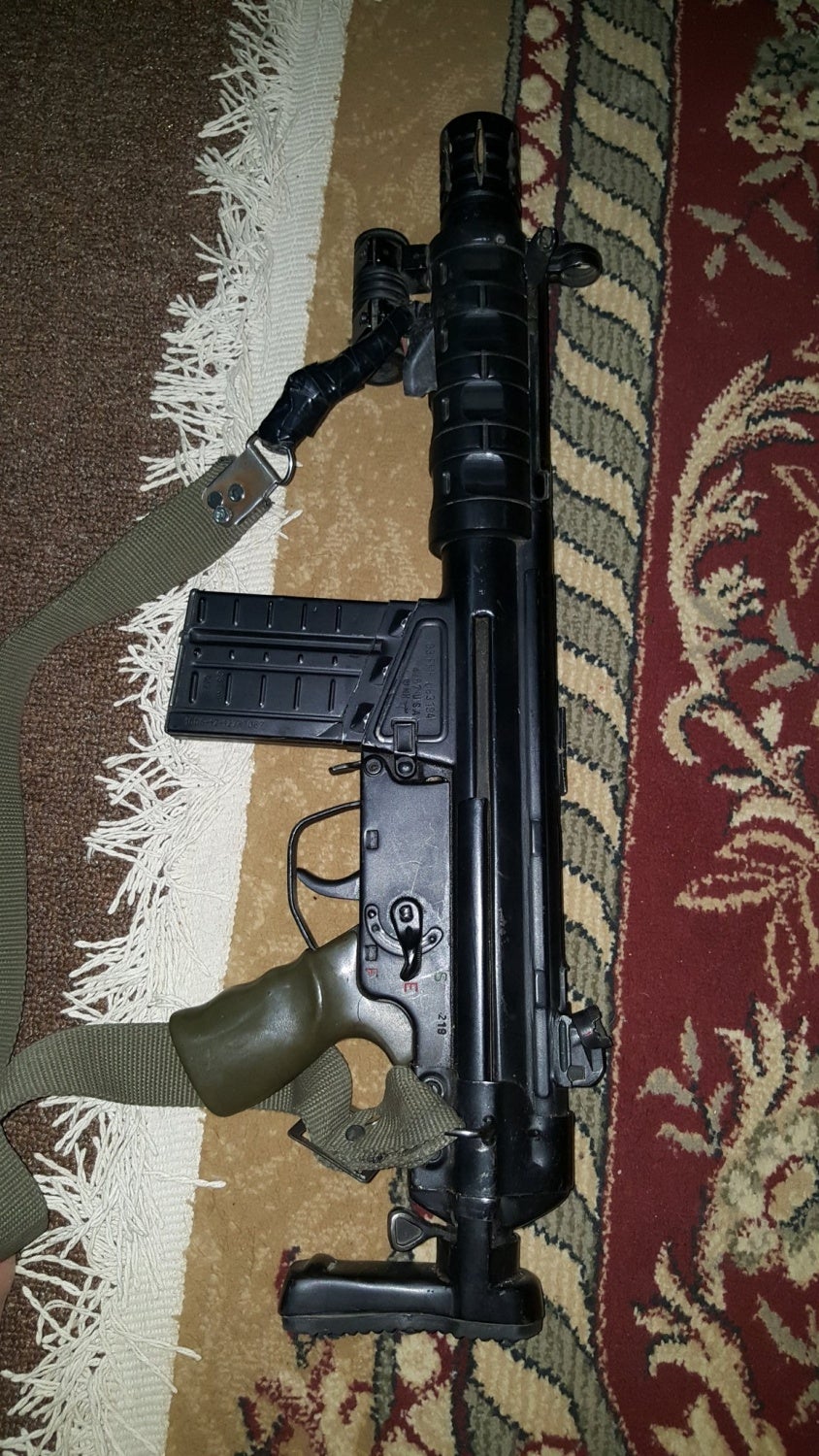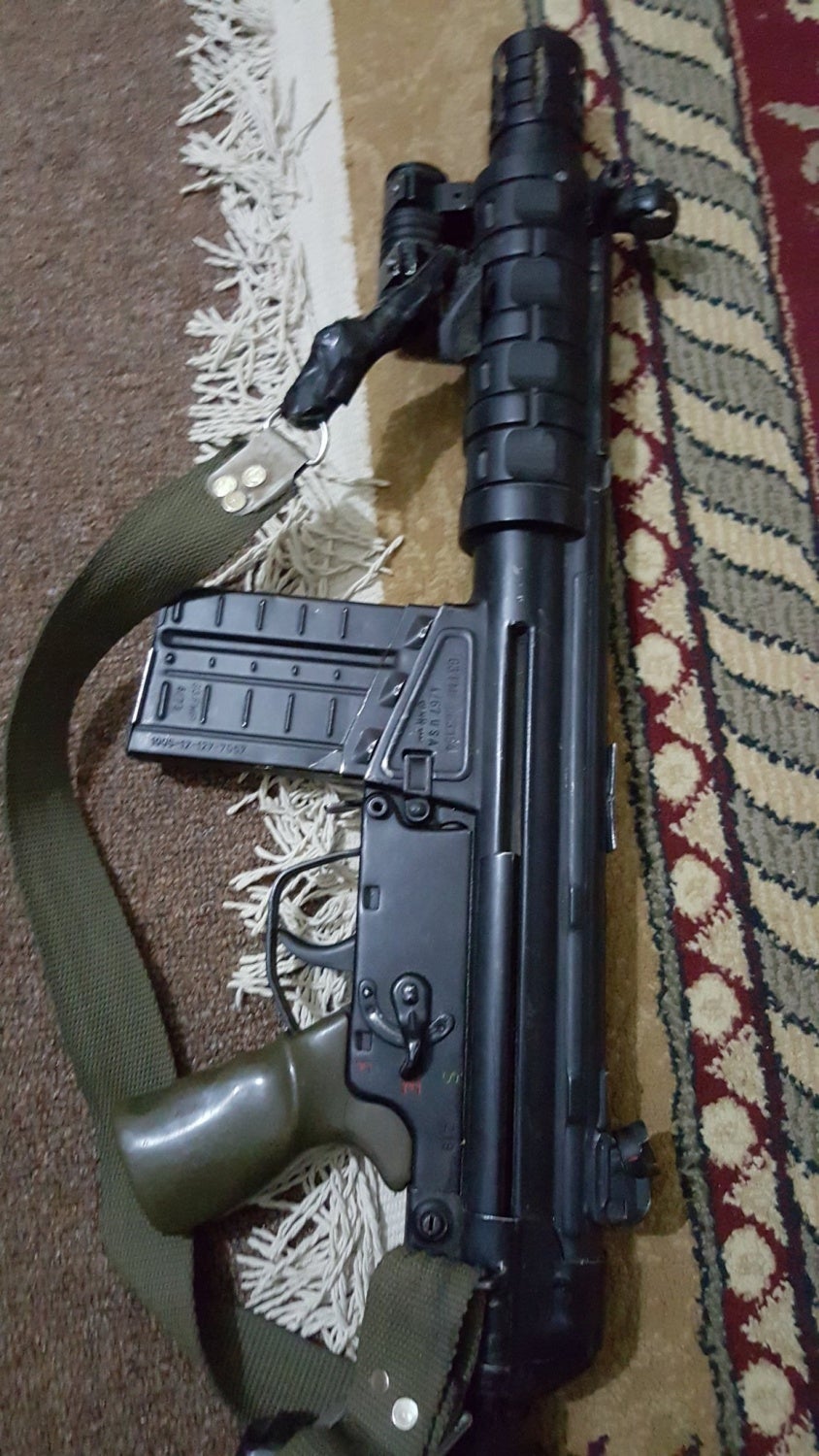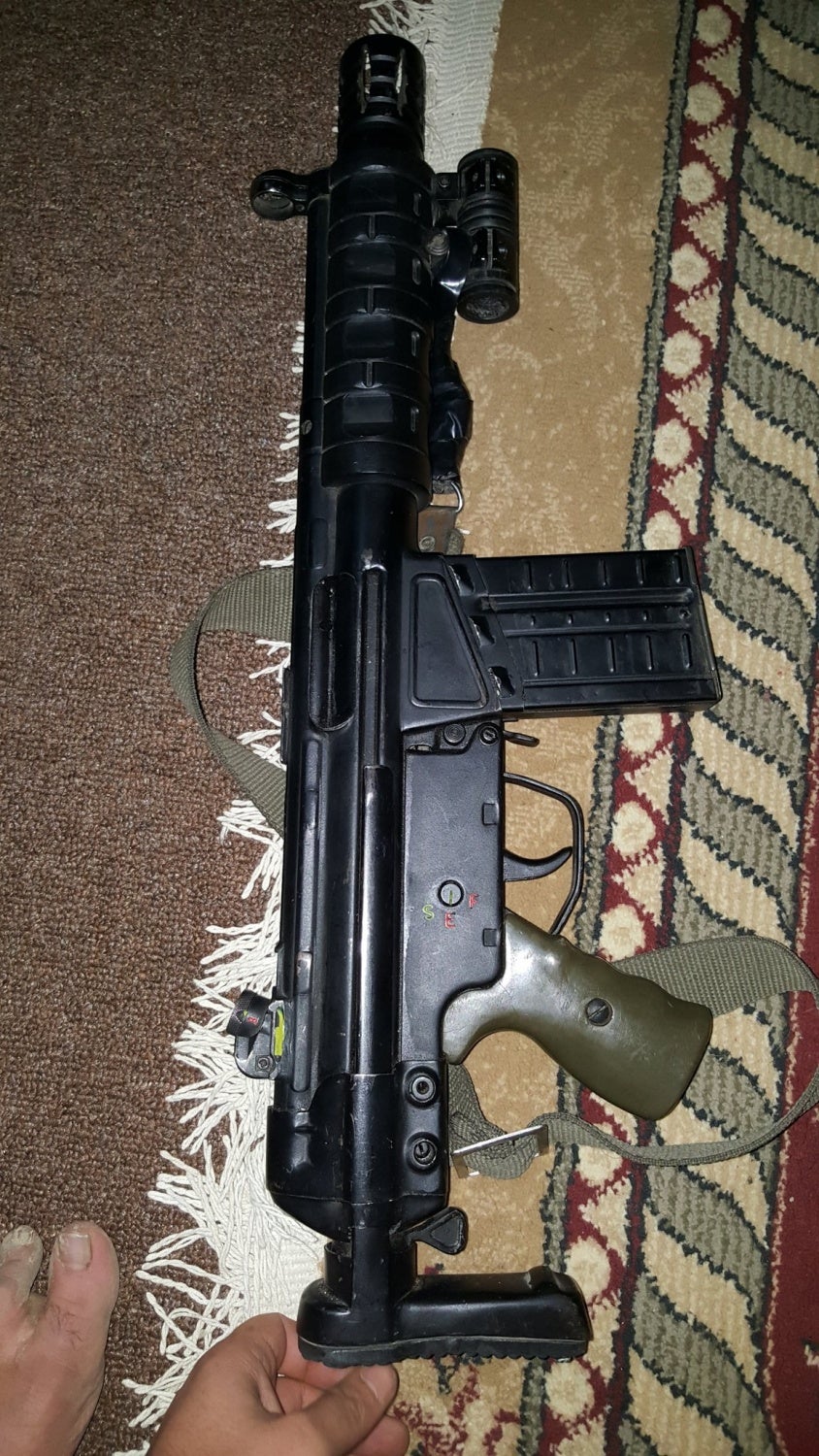A G3 patterned self-loading rifle with a collapsible stock has recently been observed through numerous online sources with Houthi fighters in Yemen and with an Al-Aqsa Brigade fighter in the Gaza strip. The rifle in question is a 7.62x51mm NATO G3-patterned rifle that has been modified to fire what would appear to be rifle grenades through a canister that appears to be a part of the trunnion and serves as a handguard as well. At this point the analysis is based upon the five available photographs that have surfaced and is thus rudimentary so far. Some have contended that the circular handguard is perhaps a craft-modified suppressor but we’ll present an argument that it most likely isn’t. We think it’s a rifle grenade launcher, but please, if any readers have some serious input on this, let us know.
The first instance of the modified G3 appeared in March of 2011 at a pro-President Saleh protest in Amran, Yemen. It comes equipped with an unmagnified reflex sight (probably of Chinese manufacture) camped to the receiver, has an adjustable green sling, and some sort of black tube attached to the handguard at the 6 o’clock position. The tube could be a flashlight, but we just can’t tell.
Notice the wrapped handguard that ends right at the receiver. It would appear that the tube is a part of the trunnion or at least is attached to the handguards in some fashion. A very important note here are the yellow markings on the “S” of the safety selector, in addition to the yellow magazine catch. Also note the stock, which appears to be reinforced, not curved and bolted/screwed in. Certainly not any standard collapsing H&K-patterned buttstock.
These next two images were shared in May of this year on a Yemeni social media account. Note in this example the lettering on the left side of the rifle, the standard buttstock, what would appear to be a flashlight mounted to a rail, a scope, and the huge flash hider.
Our next point in time comes with this image shared by the Yemen Observer on Twitter on June 30 2018.
The image depicts a gathering of Houthi fighters. Note that the fighter with the modified G3 is carrying a bulky chest harness.
Upon observing this cropped image it appears that the bulbous circular handguard isn’t present on the rifle as the diameter has somewhat shrunk. This is also noticeable through the front sight post being clearly present but on the previous image, the front sight is a mere circle sitting on top of the edge of the handguard. Again, notice the tube just below the handguard, this time it is a tan or beige sort of color. Also, keep in mind the shape of the magazine with a divet running down the center.
Then we have the most detailed image of all, posted on July 15th through Palestinian Territories-based Ma’an media site. It depicts a certain Ahmad Mansour Hassan who was killed in a “work-related” explosion while at home in the Gaza strip. Coincidently Hassan “was the commander of a rocket unit of the Al-Aqsa Martyrs’ Brigades, which is a militant group affiliated with the West Bank-based Fatah political party.”
The handguard is either wrapped in some sort of tight-fitting metal wire or these are actual grooves cut into what appears to also be metal. Note the front sight post, now flush with the bulbous handguard, and the 6 o’clock attachment piece but in this image doesn’t have any sort of attachment on it. Also, note the compensator or muzzle brake.
Again, we can clearly observe the yellow marked selector markings, magazine catch, and on the rear sight dial. But more importantly look at the stock. Definitely not any H&K-patterned production buttpad that currently exists.
From closely studying these images, the bulbous handguard, cylindrical muzzle device, and the reinforced buttstock, it would appear that this is a modified G3-patterned rifle that might be made to fire some sort of rifle grenade. It doesn’t necessarily have to be an HE grenade but could also be smoke, signaling. The cylindrical muzzle device appears to be fitted to whatever canister is designed to fit inside of it. In addition, the bulbous handguard would appear to be specifically made to withstand the pressures created when a blank cartridge propels the rifle grenade. Another point about this is that the individual holding the rifle in Gaza was killed in an explosive mishap. Too much of a coincidence with the photograph, was he tampering with a live rifle grenade or fired a live round into one? We just don’t know, but these are the facts as we know it.
An example of such a craft-modified system that has developed within the past decade is with the Kachin Independence Army in northern Burma, known as the M25 (stamped on the trunnion).
But couldn’t it be a suppressor? This is a distant possibility but observing the size of the tube, it seems unlikely. Yes, there are suppressors of this diameter but these are mounted on anti-materiel rifles or heavy machine guns. Small arms that generate a large amount of heat would require a larger suppressor tube volume for that gas to cool. Not only does the G3 not produce enough heat to warrant a suppressor that size, but this model also has a muzzle device with cuts in it that would probably negate some of the suppression that would have occurred in the tube itself. The other important observation is the modified stock. Why go to the trouble of modifying the buttpad for additional recoil if there isn’t any present with a suppressor? Another point here is that because the rifle is roller-locked, there isn’t a need for a gas tube that many other rifles would require these days.
What about the base G3 rifle? Looking at the yellow markings throughout the two photographs in Gaza and in Amran, we can clearly make out the color of the rear sight dial and selector switch. A possible explanation is that the rifle itself might originally be a Portuguese Fábrica Militar de Braço de Prata (FMBP) Model 63 or Espingarda m/961 in a carbine variant. FMBP rifles have been seen in Yemen for a significant amount of time, very different from the Enfield manufactured G3s and Saudi MAC produced ones that are in abundance.

Image from https://www.timesofisrael.com/houthis-kill-yemen-strongman-saleh-as-rebel-alliance-tatters/
What is unique to the FMBPs (apart from a ported handguard on the carbines), is that they have yellow selector markings for the Safe position. However, one point about this is that H&K patterned and license-produced rifles have been seen in yellow outside of Portugal so this cannot be a definitive ID solution. In addition, on the more recent Houthi fighter posing with his mates, we see the same magazine in use, with the central divets (evidenced above). Now, early H&K magazines appear to have lacked the ribbed sides that form that gridlike pattern, so again, we have to take this assessment very carefully.
But if you wanted to stick a rifle grenade on the end of a G3, what’s wrong with the older direct to muzzle mounted method? The answer is that there are craft-modified versions with such attachments, such as these examples in Kenya.
However, for infantry use, they apparently were very uncomfortable, even harmful to fire as this excerpt from Small Arms Defense Journal shows–
The grenade body consists of two metal “contact jackets” (Kontakt hauben) one above the other. On impact, the outer jacket will be dented until touching the inner jacket, thus closing an electric circuit and setting off the grenade. Accidents can happen if a damaged and already dented grenade is fired. But, even standard training is not harmless—the hard recoil consistently causes injuries from bruises to broken thumbs if the rifle is not held correctly. A target of 300 millimeters of armor can be penetrated by a rectangular angle of impact.
Photograph Update
We just received these in the inbox!
Much thanks to Marty Morgan, and Everest65 for pointing out some of these photographs!
 Your Privacy Choices
Your Privacy Choices



